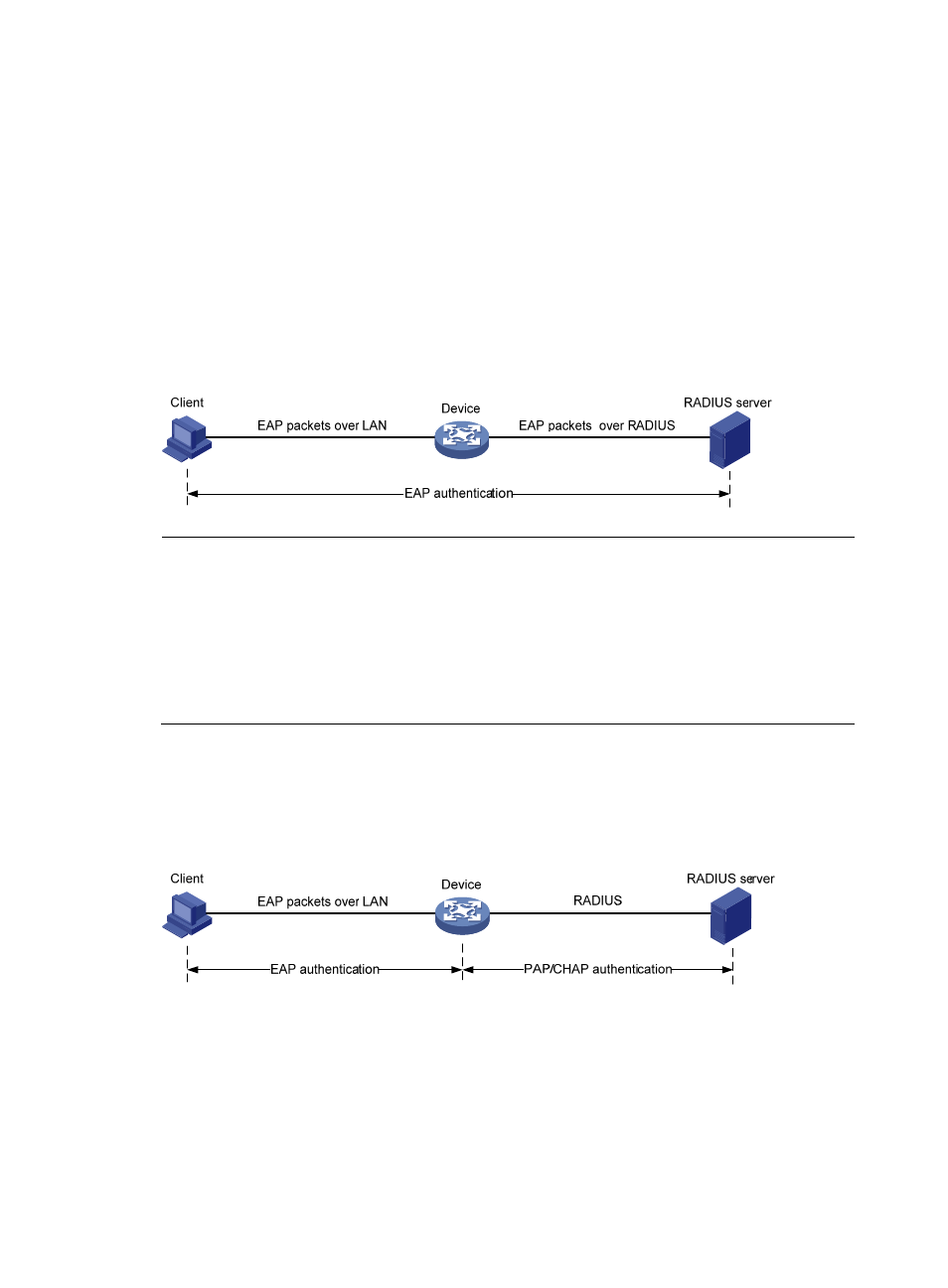1x authentication procedures – H3C Technologies H3C WX3000E Series Wireless Switches User Manual
Page 122

108
•
Unicast trigger mode—Upon receiving a frame with the source MAC address not in the MAC
address table, the access device sends an Identity EAP-Request packet out of the receiving port to
the unknown MAC address. It retransmits the packet if no response has been received within a
certain time interval.
802.1X authentication procedures
802.1X authentication has two approaches: EAP relay and EAP termination. You choose either mode
depending on the support of the RADIUS server for EAP packets and EAP authentication methods.
EAP relay is defined in IEEE 802.1X. In this mode, the network device uses EAPoR packets to send
authentication information to the RADIUS server, as shown in
.
Figure 58 EAP relay
NOTE:
•
In EAP relay mode, the client must use the same authentication method as the RADIUS server. On the
network access device, you only need to execute the dot1x authentication-method eap command to
enable EAP relay.
•
Some network access devices provide the EAP server function so you can use EAP relay even if the
RADIUS server does not support any EAP authentication method or no RADIUS server is available. For
the local EAP authentication configuration procedure, see "Configuring AAA" in this configuration
guide.
In EAP termination mode, the network access device terminates the EAP packets received from the client,
encapsulates the client authentication information in standard RADIUS packets, and uses (Password
Authentication Protocol) PAP or (Password Authentication Protocol) CHAP to authenticate to the RADIUS
server, as shown in
Figure 59 EAP termination
- H3C WX5500E Series Access Controllers H3C WX3500E Series Access Controllers H3C WX2500E Series Access Controllers H3C WX6000 Series Access Controllers H3C WX5000 Series Access Controllers H3C LSWM1WCM10 Access Controller Module H3C LSUM3WCMD0 Access Controller Module H3C LSUM1WCME0 Access Controller Module H3C LSWM1WCM20 Access Controller Module H3C LSQM1WCMB0 Access Controller Module H3C LSRM1WCM2A1 Access Controller Module H3C LSBM1WCM2A0 Access Controller Module H3C WA3600 Series Access Points H3C WA2600 Series WLAN Access Points H3C S10500 Series Switches H3C S5800 Series Switches H3C S5820X Series Switches H3C S12500 Series Switches H3C S9500E Series Switches H3C MSR 5600 H3C MSR 50 H3C MSR 3600 H3C MSR 30 H3C MSR 2600 H3C MSR 20-2X[40] H3C MSR 20-1X H3C MSR 930 H3C MSR 900 H3C SR8800 H3C SR6600-X H3C SR6600 H3C SecPath F5020 H3C SecPath F5040 H3C VMSG VFW1000
